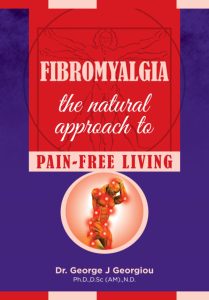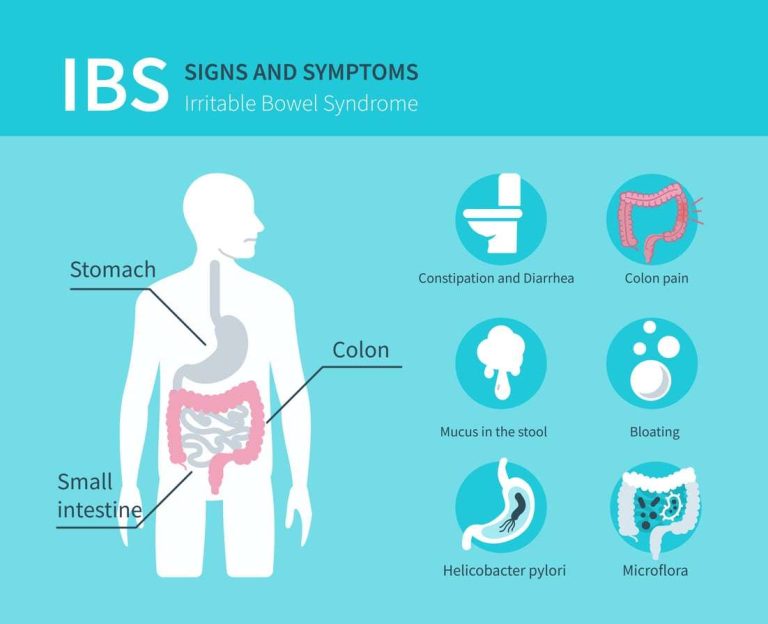Refined Foods and Health
REFINED FOODS, TEETH, BONE HARDNESS, & PREMATURE AGING
While cutting tooth structure with low speed apparatus and chiselling bone during oral surgical operations it is possible mechanically to “feel” how hard or soft the teeth and bone are, and to determine the physical health of the human being. This mechanical feel of the tissues is similar to rubbing fabrics between the fingers to determine the quality of the material. The dentist is probably the only one in a healing profession who can literally cut into the tissues he is treating to determine the quality of the human animal.
Teeth and bone hardness can be a control in developing and testing the effect of nutrition on laboratory animals and to study how to increase the longevity of adult human beings toward the 100 year mark with a minimum of illness.
OBSERVATIONS – HARD TEETH AND BONES LEADS TO STRONG BUILD
I have noted while cutting teeth during operative procedures, and chiselling bone during surgical removal of teeth, that some patients had teeth and bone that seemed as hard as rock. Other patients had teeth and bone that were very soft or with variations between these two extremes. Why should there have been such differences in the character of these hard tissues of the body? The old adage that “we are what we eat” has been found to be the determining factor in the hardness of these oral tissues, and in the aging of the individual.
Throughout the years, when extremes between the hard and soft tissue of patients were noted, the patients were asked about the types of food they had eaten from infancy up to their present ages, as well as questions concerning their general health and history. Generally, those with hard teeth and bones were strongly built and in their youth were participants in different forms of athletics. They were more often born and raised on farms, but also in large cities or small towns where they ate fresh-cooked and raw foods that were freshly obtained from the farm or the garden.
They generally started out in life breast-fed and not bottle-fed. The milk consumed in childhood was, without exception, raw and not pasteurized. These people were generally in excellent health. When asked if any of their family or friends with similar diets ever had a heart attack in their early forties or fifties, or died young from any other causes, they would think back and say that their parents, grandparents or others in their family lived to old age-into their eighties and nineties-in good health. They also had many or all of their teeth.
STRONG TEETH AND BONES A RARITY ON TODAY’S SOCIETY!
People with strongly built teeth and bone are being lost from our modern civilization in the United States of America. Their children have softer dentitions, and their grandchildren and great grandchildren today are worse off than ever, in spite of the false belief that they eat better than their forebears.
These observations and questions are more than a controlled laboratory experiment or controlled clinical data of a limited number of patients. It is a generation of over thirty years of dental practice in which observations were made to understand clinically the relationship with premature aging. The number of new patients with rock-hard teeth and bone was not recorded, as a report of this kind was not anticipated.
In the early days, new patients entering my practice with rock-hard teeth and bone would perhaps average a half dozen per year. In recent years, a full year could go by without seeing even one new patient with rock-hard teeth and bone. Nevertheless, if all such cases were recorded to furnish concise data or documentation, I would estimate that there would not have been many more than 100 patients among over 3,000 new patients.
The remaining patients would fall into the category of soft or not-so-hard teeth and bone, in varying degrees. Therefore, in the early days of my practice the average number of new patients with rock-hard teeth and bone would average approximately three percent. Today’s new patients having rock-hard teeth and bone would be practically zero percent.
DISEASE AND REFINED FOODS!
The patients who had soft teeth and bone did not generally have admirable food records for themselves and their families. They generally ate refined and chemically treated foods, which were treated to preserve them and to prevent spoilage. The fats were hydrogenated to allow them to be kept out of the refrigerator without spoilage; the milk had been pasteurized to avoid tuberculosis and brucellosis.
Fruits and vegetables had been frozen, transported and stored for a length of time with loss of nutrients that are known and that are as yet unknown; the foods they consumed such as cake, candy, ice cream and soft drinks usually contained refined sugars. They ate foods poorly frozen with consequent reduction and even destruction of the natural taste and texture of fresh foods, indicating a deleterious change in composition.
All of these seem to be the culprits causing soft teeth and bone, with probable development of oral and general pathology, premature greying of hair, and shorter length of life for the affected individual. We overcook, preserve and refine our food to prevent spoilage to the point where bacteria or animal life cannot thrive on this food. It is impossible for the human being to thrive and be healthy on the empty calories of this sterile-like food which may be causing the degeneration of the physical health being experienced in recent generations.
As our population increases, it is more difficult to distribute foods that are fresh daily from the farm and garden to so many millions of people.
Nevertheless, it is imperative that ways and means be developed to bring them to the population as fast as possible, such as by air freight or from local farming areas. The foods should then be bought and eaten while still fresh. We should eat the widest varieties of nutritious foods. A picky eater is one who generally suffers the most from malnutrition. We should avoid the refined foods that have had roughage and vitamins removed, and then are enriched with known vitamins and minerals to add to the nutritive value. There are vitamins and nutrients that are not known today, but will be known in the future. It does not make sense to remove the natural known and unknown nutrients through refinement and then add only the known ones which are synthetically made.
ENZYMES IN FOODS DESTROYED IN MODERN DIETS!
Wulzen and Bahrs, McCarrison, Pottenger and many others have shown the importance of living on fresh uncooked foods, which are natural for all animals, from humans to the lower forms of life. Undoubtedly, there are nutritional elements needed by the body that are inhibited or destroyed by cooking, refining and freezing. It seems that enzymes may be the substance destroyed, creating one of the missing links in the preparation of foods for digestion and assimilation for the building of strong and healthy animals.
Weiser states that the properties of enzymes may be summarized as proteinaceous biocatalysts produced by living cells to perform a specific biochemical reaction necessary for cell metabolism. He says that they act as catalysts and are called “catalysts of life,” because there can be no life without enzymes. Life is just one enzyme reaction after another, and each enzyme has a particular job to do and it cannot be made to do another. An attempt to preserve food does nothing more than create an unfavourable environment for enzyme activity. Low temperatures and cooking destroy them.
Jansen and Balls explain how enzymes constantly change the products in which they exist. The changes during the growth and ripening, and even after the harvesting, of a plant may be good or bad, depending on circumstances. They explain how food processors eliminate enzyme actions by scalding or heating before freezing, and how enzyme actions are delayed by the freezing process. Chemicals are also used in some of these freezing processes to control enzyme action.
ENZYMES IN FRESH MILK
The enzymes found in fresh raw milk are a catalase, a peroxidase, and a phosphatase. The phosphatase seems to ensure the utilization of calcium that apparently helps the formation of rock-hard teeth and bone found in the strongly built individuals in past generations, and as shown in Pottenger’s experiments. Pasteurization destroys these enzymes and their presence is a determination of the effectiveness of the pasteurization process.
Therefore, a way must be found safely and legally to market fresh raw milk to the consuming public throughout our country. This would be a big factor in avoiding the loss of these enzymes, which help build strong bodies and help to prevent premature aging.
The effect of freezing and storage of foods on the enzymes to affect the taste, texture and general quality have been discussed by Matz, Gilbert, Partmann, West, Titus, and Van Duyne and others. Frozen foods have become a major source of food supply in recent years in this age of rapid premature aging. Much research is needed in this field to find the effect of freezing on enzymes, the place enzymes have in the breaking down of foods in the preparation for assimilation and the final effect on building rock-hard teeth and bone such as is found in long-lived and healthy individuals.
SUGGESTED RESEARCH
Much research could be accomplished to determine scientifically the cause of premature aging by the use of teeth and bone hardness tests on laboratory animals, as well as on teeth of human beings. The methods of testing are available, and it is a matter of proper planning and accomplishing these investigations by qualified scientists in our research institutions.
In order to properly attack this problem of premature aging, it is necessary that a crash program be instituted by the Federal Government. Such a program in teeth-bone hardness investigations could result in a change in the reduction and elimination of many diseases that our population contract. This change would reverse the increased mortality trends experienced since 1960, and would allow our population to live toward the 100 year mark with a minimum of illnesses.
The available technology of determining the hardness of teeth and bones could be used on laboratory animals that have a life span of a few years. In months or several years, they can give the scientists controlled information that makes many generations of trial and error with human beings with the present research programs.
Many methods have been used to determine the hardness of various materials used in industry. The hardness of both dentine and enamel has been studied by many investigators, as listed and discussed by Leicester and Newbrun and Pigman. The Knoop hardness tests were first used in dentistry by Paffenbarger, Schoonover, and Souder to measure the indentation hardness on enamel, dentine and the cements. In recent years, much research has been accomplished using the Knoop diamond indentor with the Kentron Microhardness Tester as described by Caldwell, Muntz, Gilmore, and Pigman and Newbrun, Timberlake, and Pigman.
Koulourides, Pigman and others, used hardness tests to determine the rehardening abilities of various chemicals on the enamel and their reports are well-documented with references to other researchers who have contributed many findings in their field. They measured the effect of calcium and phosphorous ions of chemical solutions and of the saliva on the re-hardening of the enamel surfaces, softened by a prior treatment with a buffer. In a like manner, the nutritional effect of various foods as discussed in this report on teeth and bone hardness can be determined during their development and maintenance.
Although the dentist can determine clinically with relative accuracy the hardness of soft teeth and bone, it is necessary for researchers to use controlled methods for a comparative determination on a scientific basis. They can provide a vast field of new research in the effect of numerous types of foods on the growth and maintenance of various groups of laboratory animals as determined by teeth-bone hardness tests.
Teeth-bone research on laboratory animals should be accomplished with various foods. This should include quantitative investigations of raw whole milk and its products, pasteurized, skim and canned milk; and meats, fish, fruits and vegetables which are fresh-killed or fresh-picked from the farm or garden, and of the various number of days and weeks since they were received from their source.
The nutritional effects of these foods should be investigated with varying percentages of enzymes when eaten as fresh-raw, fresh-cooked, canned, frozen, dehydrated, refined, enriched and whole grain foods, and with foods cooked for varying periods and with differing amounts of heat, as well as these various types of foods, both with and without food preservatives or processing methods which prevent spoilage or deterioration. This research should include a possible new menace, the atomically radiated foods with the possibility of a faster rate of premature aging in future generations.
Teeth-bone investigations should be made to determine if a person should eat only the proper nutritional foods, or if it is permissible to include some refined and deleterious foods in a proper nutritional diet.
I have noted clinically that certain drugs have an effect on the saliva, which in turn affects the oral hygiene of the teeth, as well as the health of the soft tissues. Patients taking these drugs may have difficulty in keeping their teeth clean. The enamel forms materia alba or a layer of whitish material which adheres to the enamel and can be scraped off with an instrument. The drugs seem to cause an inhibiting effect on the normal physiology of the saliva and they prevent the patient from having a smooth, shiny enamel that is free from food matter. Their effect on the health of the oral structures should be investigated by the use of the teeth-bone hardness tests. Therefore, the investigation of these various classes of foods should be made on drug-free animals as well as those treated with drugs that are now commonly prescribed for various ailments.
A crash program should be sponsored by the Federal Government to find ways and means of maintaining healthy herds of dairy cattle, free from diseases such as tuberculosis and brucellosis that are transmitted to the human being. Then, it will be essential that state laws be revised in order to make safe raw milk and its dairy products available throughout the United States.
Hundreds of millions of dollars are spent yearly in research and in the treatment of various degenerative diseases. If a fraction of this amount would be spent on research in what available foods cause good health instead of the treatment of these diseases through chemotherapy, the length of life could be extended toward the 100 year mark with a minimum of illness.
The effect of this recommended nutritional research on teeth-bone hardness would be most instrumental in establishing Federal laws and regulations governing food technology and distribution to give the public the means of reaching such a goal.
SUMMARY AND CONCLUSIONS
1. Teeth and bone hardness can help determine the strength of construction or physical health of the human body. Rock-hard teeth and bone is an indicator of a good start toward the maximum longevity of life with good health. It is estimated that thirty years ago approximately three percent of new patients had rock-hard teeth and bone, in comparison with the present prematurely aging generation, which has practically zero percent with rock-hard teeth and bone.
2. Researchers should use the SUGGESTED RESEARCH to determine the degree of hardness to softness of teeth and bone. This would provide a controlled search to determine the effect of various types of nutrition on the oral and general health of laboratory animals, as well as on human beings. This could also be a means to help find the causes for premature aging, leading to the prevention and cure of many degenerative diseases.
3. Efficient and quick distribution of garden-fresh foods should be developed to bring them from local or distant sources to the consuming public as fast as possible.
4. The enzymes in fresh foods seem to be an important factor or indicator of other unknown factors in the formation of hard teeth and hard bone and the prevention of premature aging. They seem to be instrumental in the breakdown of foods in their preparation for assimilation. Pasteurization of milk, dehydration, cooking, refining, freezing and atomic radiation reduce or kill the enzyme content of the foods, reducing their nutritional asset, and thus cause softer teeth and bone, along with premature aging.
5. Our research institutions must find methods to safely market a disease-free certified raw milk and milk products for public use, and state laws must be revised to allow its sale throughout the United States. Whole raw milk and its products contain some metabolic factors, such as enzymes, which are instrumental in building rock-hard teeth and bone and in maintaining healthier bodies to avoid premature aging. The enzymes are destroyed by pasteurization, canning and refining of this fluid and its products.
The Food and Drug Administration have not evaluated these statements. This information and products are not intended to diagnose, treat, cure or prevent any disease. For all serious health problems, consult a qualified health professional.
Taken From: The Weston A. Price Foundation website at www.westonaprice.org
Read other interesting articles such as:
The Shocking Facts About Low-Fat Diets – Part 1
The Shocking Facts About Low-Fat Diets – Part 2










